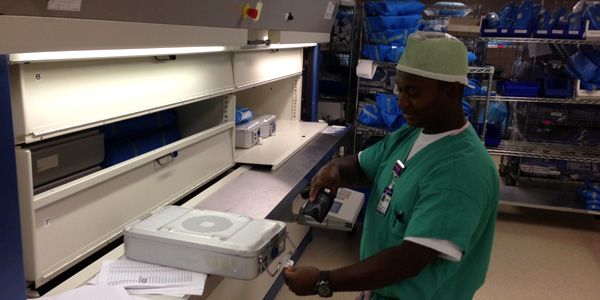If you happen to follow trends in healthcare, then you have surely heard about the shortage of nurses in the US. In July 2008, the American Healthcare Association (AHCA) reported a national RN vacancy rate of 8.1 percent. While this number has likely climbed in the last few years, it by no means compares to another vacancy rate that hospitals face today.
Central Sterile (CS) departments face many challenges, one of which is staff turnover. 32 percent of CS director positions across the US are currently vacant. This vacancy could be due to low wages or staff promotions. But this shortage may be a result of the other challenges in sterile supply.
CS departments inventory supplies and instruments used in surgery. Hospitals lose $10,000 worth of instruments and equipment per month.
CS departments must pay close attention to storage and handling in order to prevent the spread of infectious disease. The Affordable Care Act stipulates that hospitals will not be reimbursed for hospital acquired infections. The financial penalty could be drastic, which puts extra pressure on CS directors and staff to perform duties with virtually no mistakes.
CS department methods and procedures can sometimes be antiquated. Technicians receive preference cards that stipulate the surgeon’s preferred instruments, sutures, gloves, gowns, etc. Poor lighting, insufficient storage space, unsatisfactory ergonomics, and other facility deficiencies can lead to inaccuracy when picking items for a case cart. It also means that equipment might have to be moved and shuffled. The more frequently items are handled, the more likely they are to become contaminated.
CS departments also run the risk of creating holes or tears in sterile wrapping and filter paper. If packaging is damaged, then the item must go through decontamination. The sterilization process can take 3-4 hours, and also creates a log jam in the regular cleaning schedule. Flash sterilization is another solution. It takes less time, but JCAHO penalizes hospitals if this solution is over-utilized. Both reprocessing and Flash sterilization are quite expensive.
What can be done to help curb these expensive and threatening trends? One simple, powerful solution is the Hanel Rotomat. The Rotomat is an ideal solution for Central Sterile supply storage. Let me give you a brief introduction to it. Think of a Ferris Wheel encased in steel. The Rotomat is a vertical carousel that brings the materials to the operator – not the other way around. Here are a few facts:
- The Rotomat storage system comes with an inventory management system that helps the department accurately track supplies. The management system helps build accurate pick lists and project inventory surplus or depletion.
- The system is fully automated, and supplies are delivered comfortably to the user. This means no unnecessary squatting or reaching.
- Each item and piece of equipment has its own home on a shelf, minimizing handling and the risk of ripped or torn packaging.
- The Hanel Rotomat is a high density storage method. 1 system offers the same or greater capacity and uses the same square footage as 6 standard wire racks.
- Rotomat is an enclosed unit that provides a more sterile environment than open shelving
The Rotomat is an ideal solution for the challenges CS departments face. In my next article, I’ll dive more into the specifics of the Rotomat solution for Central/Sterile Supply. For now, suffice to say it is a real answer to a real problem for hospitals.











